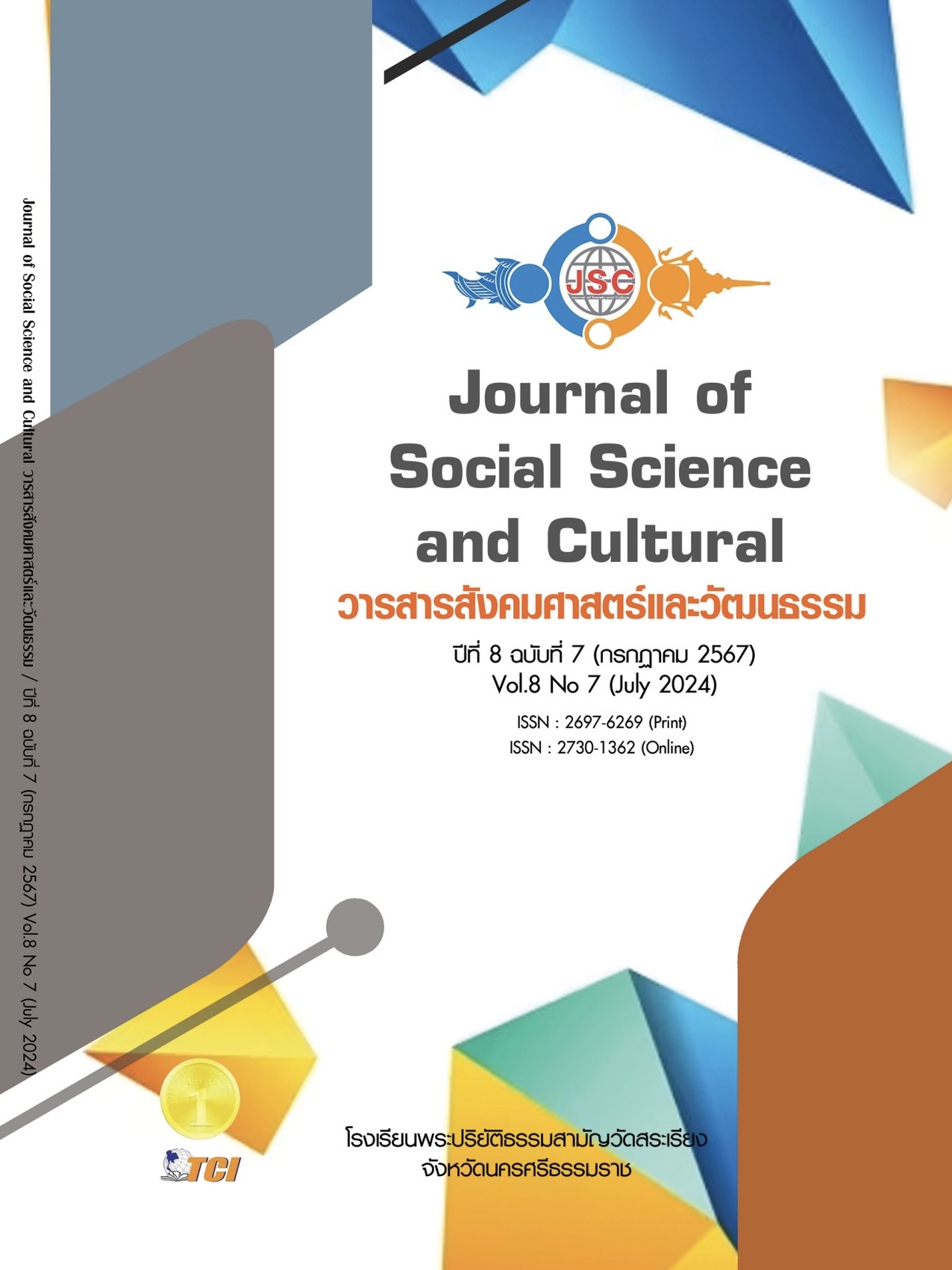A STUDY AND ANALYSIS OF THE DEVELOPMENT PATTERNS OF INDIGO DYEING PRODUCTS IN THAILAND, CHINA AND JAPAN
Main Article Content
Abstract
This article is part of a research project on a comparative study of indigo dye products from Thailand, China and Japan. The researcher presented on product development issues in Thailand, China, and Japan. The area selected for the research study is a famous production and development area for indigo dye products. The issue of product development is one of the issues of the research study. The results of the study found that the development of indigo dye products in 3 countries has the direction of product development leading to an international industry system so that products are in demand in the domestic and international markets. By all 3 countries have a product development process divided into 11 steps as follows:- 1) Clearly defining product goals and objectives, 2) Defining product limitations, 3) Product concept creation, 4) Product concept selection, 5) Analyzing feasibility and direction of marketing in terms of products, 6) Product concept development, 7) Product prototype creation, 8) Production process development, 9) Product testing and market trials, 10) Marketing planning and consumer studies, 11) Product distribution locations which can be divided into characteristics of products produced and developed in the areas of all 3 countries, divided into 4 formats, divided into:- 1) Lifestyle, 2) Ready-made fabrics, 3) Ready-made fashion products, 4) Furniture and home decorations. In this regard, the selection of ideas in the field of product design and development, it is an important process that all 3 countries have the aim and desire to be suitable and able to make indigo dye products that are local wisdom of Thailand, China and Japan in order to reach and be known as well as being in demand in the market in the present era.
Article Details
References
กัญญา จึงวิมุติพันธ์ และคณะ. (2553). การประยุกต์มิติทางวัฒนธรรมเพื่อการพัฒนาการออกแบบผลิตภัณฑ์ผ้าย้อมครามบ้านคันพะลาน ตำบลนาตาล อำเภอนาตาล จังหวัดอุบลราชธานี. วารสารวิชาการ คณะสถาปัยกรรมศาสตร์ มหาวิทยาลัยขอนแก่น, 9(1), 81-89.
กำจร สุนพงษ์ศรี. (2560). สุนทรียศาสตร์ หลักปรัชญาศิลปะ ทฤษฎีทัศนศิลป์ ศิลปวิจารณ์. กรุงเทพมหานคร: สำนักพิมพ์แห่งจุฬาลงกรณ์มหาวิทยาลัย.
ทอแสงรุ้ง มโนริ และคณะ. (2564). การพัฒนาและออกแบบผลิตภัณฑ์กระเป๋าผ้ามัดย้อมสีธรรมชาติ. วารสารบัญชีปริทัศนมหาวิทยาลัยราชภัฏเชียงราย, 6(1), 87-95.
ปฐมพงศ์ เศวตศิริ และคณะ. (2566). การวิจัยพัฒนารูปแบบ ลวดลาย หัตถกรรมผ้าฝ้ายย้อมสีธรรมชาติ บ้านกุ่ม อำเภอโขงเจียม จังหวัดอุบลราชธานีเพื่อเป็นผลิตภัณฑ์ของที่ระลึก. วารสารศรีวนาลัยวิจัย, 13(2), 15-28.
วณัฐญา งอยผาลา. (2565). ปัจจัยความสำเร็จของเกษตรกรผู้ผลิตผ้าครามในอำเภอพรรณานิคม จังหวัดสกลนคร. วารสารแก่นเกษตร, 50(3), 703-709.
ศศิกาญจน์ นารถโคษา และคณะ. (2565). การออกแบบและพัฒนาผลิตภัณฑ์ตกแต่งที่พักอาศัยจากเศษผ้าย้อมครา ที่สะท้อนอัตลักษณ์จังหวัดกลนคร. วารสารสถาปัตยกรรม การออกแบบและก่อสร้าง, 4(1), 41-57.
ศิริพร ณ ถลาง. (2558). ประเพณีสร้างสรรค์ในสังคมร่วมสมัย. กรุงเทพมหานคร: ศูนย์มานุษยวิทยา สิรินธร.
อนุรัตน์ สายทอง. (2550). การศึกษาและพัฒนาสีย้อมจากคราม. สกลนคร: มหาวิทยาลัยราชภัฏสกลนคร.
อนุรัตน์ สายทอง. (2558). การพัฒนาผ้าคราสำหรับคนรุ่นใหม่. วารสารมหาวิทยาราชภัฏสกณนคร, 7(13), 87-95.
อัญชลี โสมดี. (2553). การประยุกต์พระราชดำริเศรษฐกิจพอเพียงเพื่อสืบทอดภูมิปัญญาทองถิ่น ด้านงานหัตถกรรมของจังหวัด. เชียงใหม่: มหาวิทยาลัยราชภัฏเชียงใหม่.


